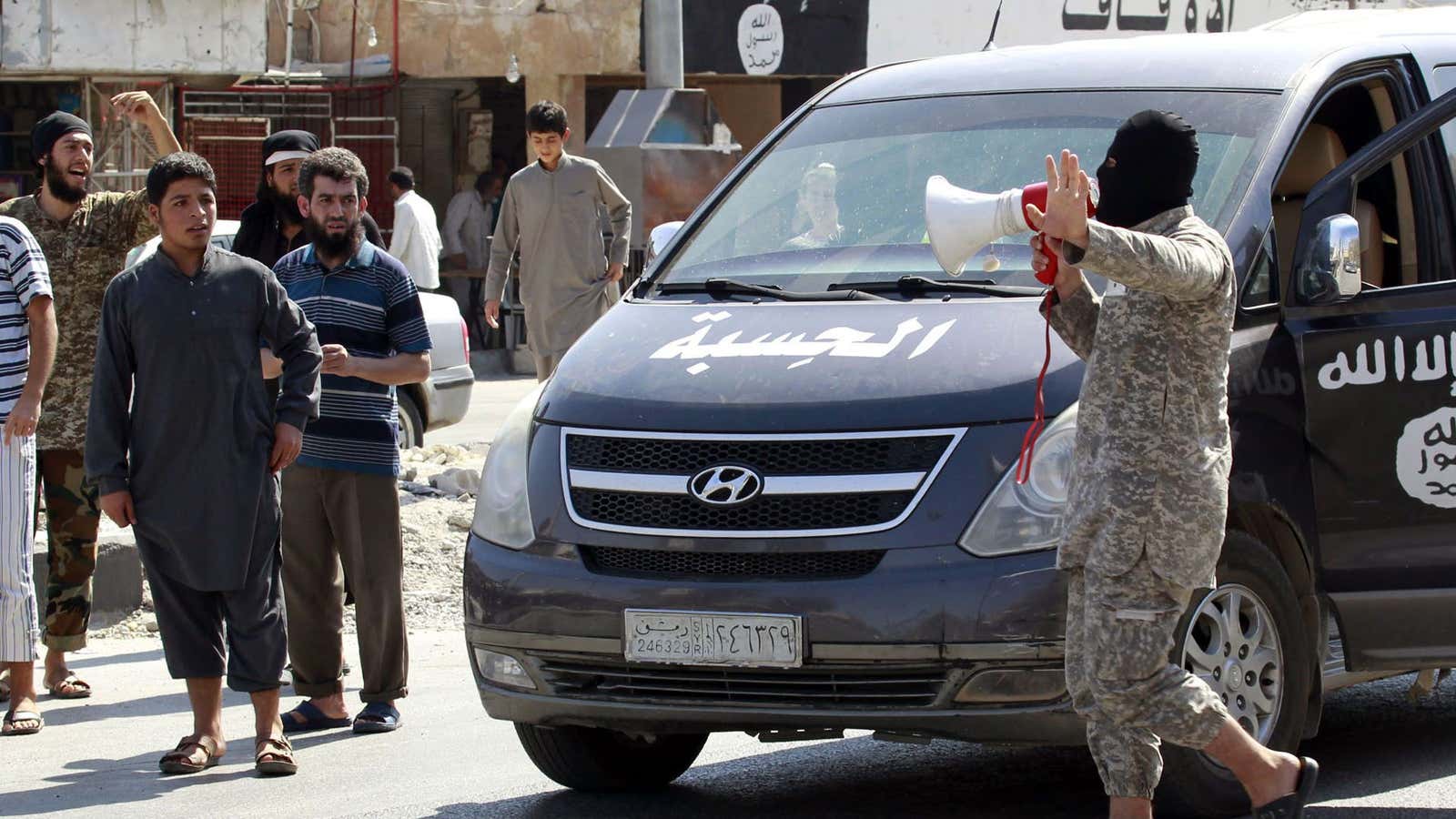Editor’s Note: In ‘The Islamic State,’ a comprehensive new analysis of the terrorist organization more commonly known as ISIL or ISIS, Barrett, former head of global counterterrorism operations for MI6, and his co-authors at The Soufan Group—former CIA case officer Patrick Skinner and NCIS veteran Robert McFadden—examine the political and social conditions that contributed to ISIL’s growth, and to its continued success. An understanding of these factors, the authors argue, is crucial to defeating ISIL. This extract from their report examines the six most important factors:
The first is the deep sectarian fault line that has been a major determinant of Middle East politics since the Iranian revolution of 1979, but of particular importance since the growth of Iranian regional influence following the US invasion of Iraq in 2003. Despite the menace of ISIL to the stability of the whole region, states on either side of the sectarian divide continue to see it as a lesser danger than the regional dominance of their rivals. Until this calculation changes, The Islamic State will not face major regional opposition.
The second is the complete lack of confidence in the Arab world of the ruled in the capacity of their rulers to treat them fairly. This extends beyond Iraq and Syria to the many countries of the Middle East and North Africa where the idea of government according to the teachings of the Quran is hugely appealing – at least until it comes up against the reality of ISIL. For so long as governance in so many countries fails to meet the expectations of the people, there will be a steady flow of hopeful recruits to the ranks of ISIL; and many others who lack the means or opportunity to travel may be tempted to follow its directives within their own countries. The consequent fear of terrorism, whether domestic or imported, is likely to lead to further repression and other deficiencies in governance in all but the most confident and forward looking states.
The third is that the international coalition led by the United States of over 60 partners and nations who oppose the practices and objectives of The Islamic State, provides further evidence for many Muslims around the world that there is a Western-led onslaught on their religion and independence. ISIL itself is incandescent with rage that the West will not just leave it alone to establish the Utopia that it believes within its reach. It is hard at work persuading potential supporters that the non-Muslim world will do whatever it can to protect local rulers and so ensure that their discriminatory and irreligious polices remain in force. Not enough is being done on the ground to counter this narrative.
The fourth is that the little being done to counter the narrative of ISIL does not penetrate the information bubble created by its actual or potential supporters. It devotes a great deal of time and effort to propagating a positive image of itself, reinforced by a strong ideology. Despite the many weaknesses of the literal approach to religious texts adopted by ISIL, including its apocalyptic vision of the imminent end of times, its message is stronger, clearer and more consistent than that of its opponents. It offers a complete break with what has gone before as opposed to its enemies who just offer more of the same. For all its violence, ISIL promises its recruits adventure and intense engagement with an exciting new venture. There are no competing voices offering anything comparable.
The fifth, also connected with the narrative promoted by ISIL, is the lack of attractive alternatives for local and foreign fighters who decide to join ISIL as a way to find identity, purpose, belonging or spiritual fulfillment. Thus both the pull and push factors that motivate foreign fighters remain unaddressed. Furthermore, the lack of a positive counter narrative that also exploits the negative aspects of the propaganda of ISIL, leaves those who are attracted by its message – but concerned about its activities – without a clear understanding that it is just not possible to engage with ISIL without also signing up to its worst aspects.
The sixth is that despite the international opposition to the discriminatory and repressive practices of the Syrian and, to a lesser extent, the Iraqi Governments, nothing convincing is being done to force a change. In this respect, ISIL appears more effective and better motivated than any actor on the other side. Unless political reform is able to draw away this soft support, ISIL will over time bring it closer by entwining the fortunes of the local population and tribal leaders with its own.
Finally, the cultural, educational and religious stagnation evident in so much of the Middle East and North Africa does not encourage any new way of thinking about the future beyond a desire to return to the past and start again.




